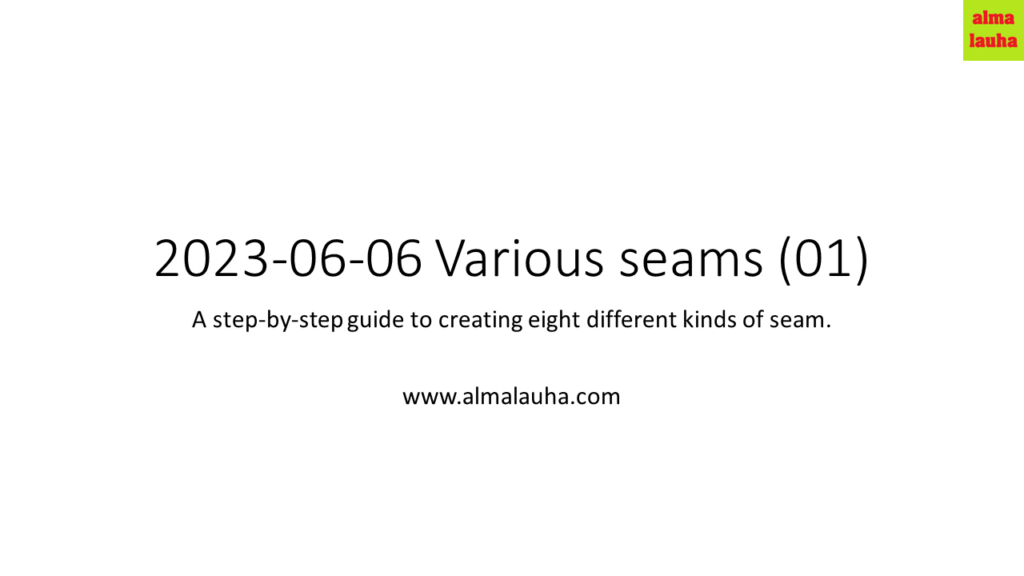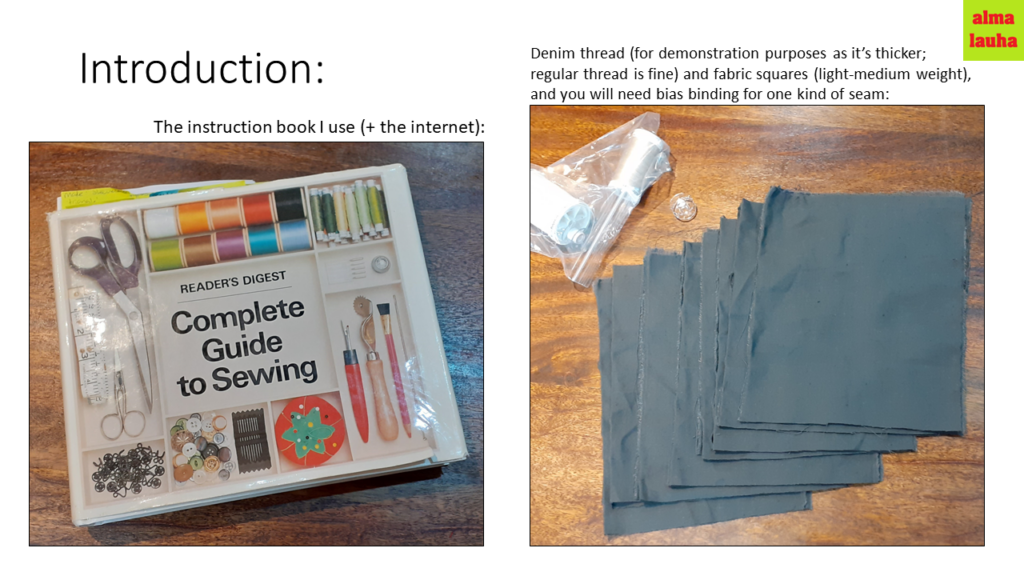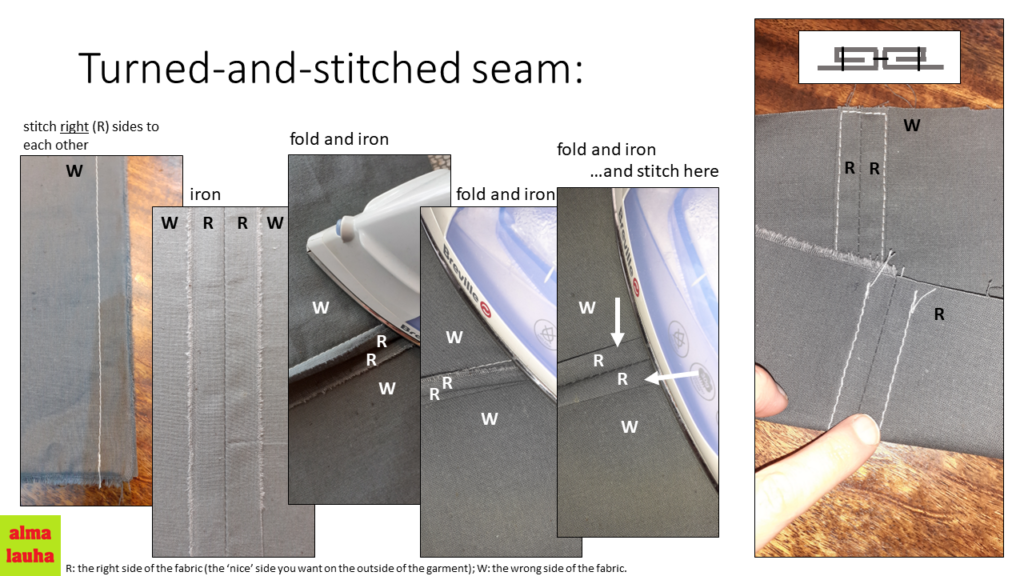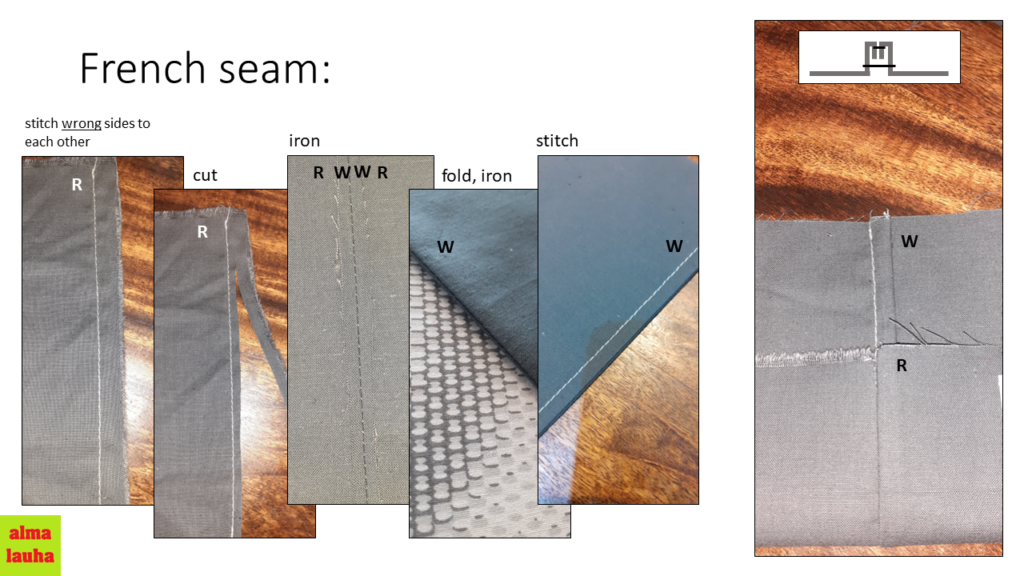I was taught the basic zig-zag seam when I learned how to sew, but there are so many more kinds of seam, many that I haven’t seen before (possibly because in a lot of the clothes commonly worn you usually see only a few different kinds of seam).
I want to learn some new seams so I grabbed my Reader’s Digest ‘Complete Guide to Sewing’. There are maybe around 20-30 different kinds of seam shown so I wasn’t going to try them all in one sitting. I picked the eight that seemed not too hard to try but also useful for various kinds of garments. (I am thinking of these Gramicci trousers I recently saw, and if I want to make a similar type of garment I will want to make strong seams.)
You will need:
* light weight to medium weight fabric
* thread (I used denim thread, which is a little thicker, because it shows better in photos; it’s fine to use regular thread)
* pins or clips
* bias binding
* fabric scissors
* a sewing machine (a basic domestic machine is fine)
* an iron and ironing board
I took photos along the way and found it easiest to make compilations using PowerPoint. I will cover the following seams today:
- Turned-and-stitched seam
- Zig-zag seam
- Bias-bound seam
- French seam
- Flat-felled seam
- Welt seam
- Tucked seam
- Self-bound seam
I realised after the first few trials that it would have been better to use fabric where the outside and inside look different so that you can more easily see what is happening. I’ll keep that in mind for a next experiment.
For years I didn’t even have an iron yet I still made clothes (mainly for clubbing). However, an iron makes sewing so much easier and now I wouldn’t want to be without. If you have no space for a full-size ironing board you could look into getting a table-top ironing board.
I hope this post helps you expand your skill set. I did these trials on straight seams only. Making these kinds of seams on curved seams will undoubtedly be more of a challenge. I imagine some types of seam are not suitable for curved seams at all.









